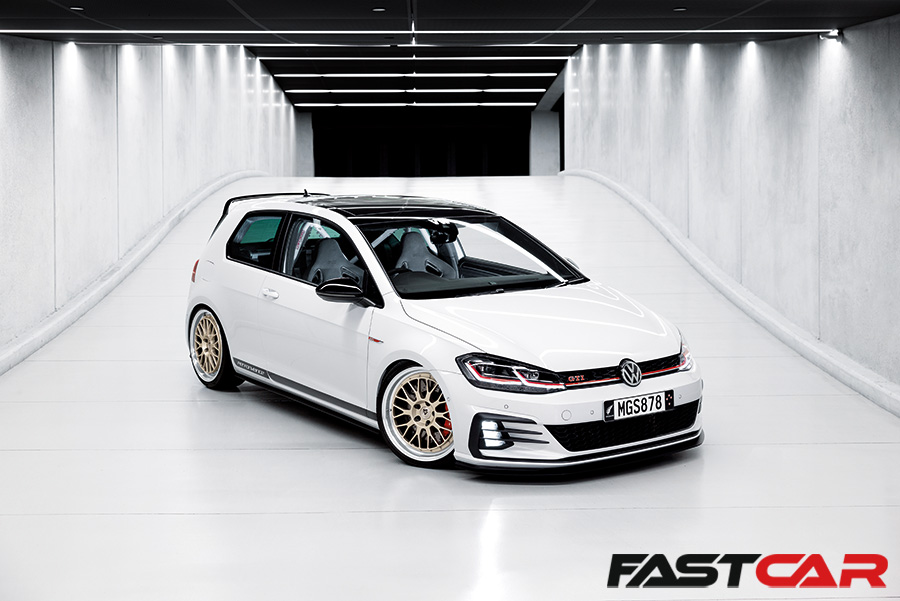Combining an aviation-grade approach to engineering and two decades of global influences, Stuart Wood’s modified VW Golf GTI Mk7.5 GTI is a 400hp track weapon that can cut it with New Zealand’s best showcars.
For all the fame it’s amassed since, the VW Golf GTI has humble roots. This was a product born of engineering curiosity, as a skunkworks project in Wolfsburg exploring the untapped performance potential of the Mk1 platform, and its most ground-breaking descendants are rooted in a similar thought process. When the Mk7 Clubsport S set a Nürburgring lap record in 2016, it was leaning on a package of small changes working in harmony rather than brute force. The engineers behind it would find some familiar thinking woven through Stuart Wood’s flawless – and very rare – GTI.
For Stuart, that approach comes naturally: “I’m an aircraft engineer by trade, and we try to make things perfect,” he tells us. “In an aircraft, everything needs to be tidy, with no squeaks, rattles or loose parts, and that’s the way I like to do things. I genuinely believe mods on modern cars can be just as good as OEM, or better, when they’re done correctly with the right amount of research. So this car was a labor of love, and zero expense was spared. I probably should have been in a Porsche 911 by now.”

Stuart’s car history
There’s an old-school ethos behind that pursuit of the perfect nu-wave Volkswagen. Although he’s now based in New Zealand, 31-year-old Stuart grew up in Cape Town, immersed (through his brother and mutual friends) in a thriving local Volkswagen scene while drawing global influences from VWVortex and Performance VW. The unsurprising end result was a Mk1 Golf as his first wheels; a base-spec ex-rental car, rare in South Africa because of its three-door bodyshell and a perfect foundation for the 2.1-litre 8-valve swap and injection of carbon fiber that followed. He’s only ever owned Volkswagens since.
That brand loyalty is an unusual constant in his adult life. Having relocated around South Africa for work, Stuart’s career eventually led him to move to New Zealand in 2017, and he didn’t waste any time searching for models that weren’t available back home. His first acquisition – a fully loaded Japanese import Mk3 16-valve – was waiting for him at the airport when he landed. It got coilovers and BBS LMs before making way for a Mk5 GTI build, which, in turn, was leaving one itch unscratched.
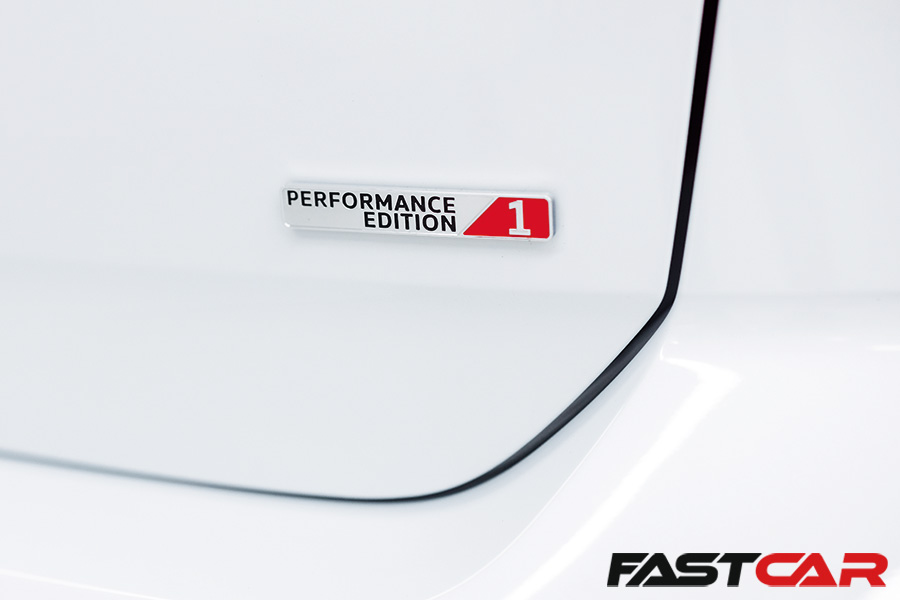
Buying the limited VW Golf GTI Mk7.5
“The Clubsport S came out while I was in South Africa and we only got 40 or 50 of them, so nobody in their right mind could afford one because they were stupid amounts of money,” he continues. “When I got to New Zealand, I thought I’d like to get myself into a three-door Mk7 because they are epic vehicles. Then as I finished the Mk5, I was buying parts from a now friend of mine in Auckland and he said he had one. I had to have it.”
This was no ordinary GTI. The Mk7.5 arrived in Australia with only one three-door model in the range, and only in limited numbers. The Performance Edition One had the same 245hp 2.0-litre TFSI engine, mechanically-locking differential, seven-speed DSG and big brake kit as Euro-spec Performance Pack GTIs, but with a unique honeycomb-patterned interior trim and only two paint options. With only 150 built, it was hardly a common car in Australia. In New Zealand, it was practically a one-off.
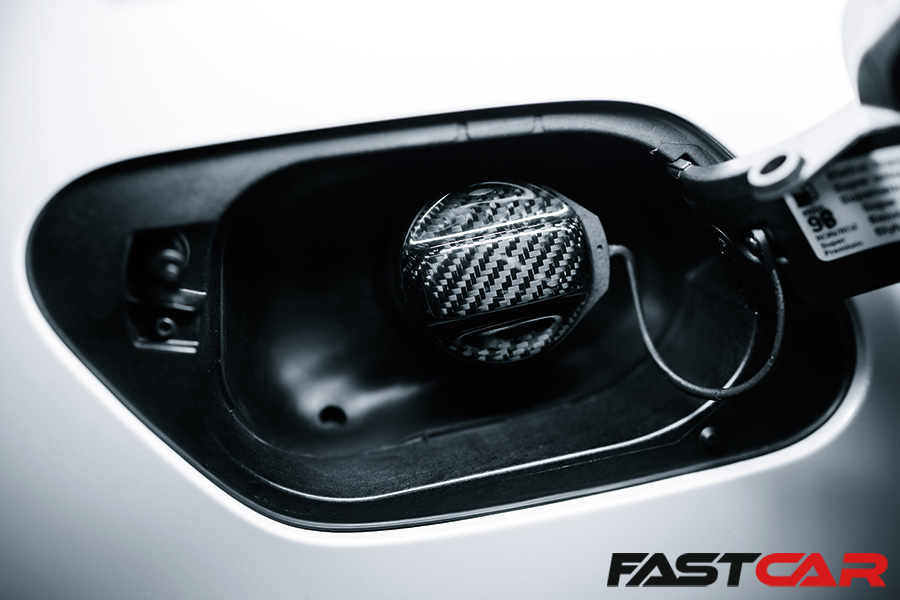
Modifying the VW Golf GTI Mk7.5
The completeness of that factory spec was a good start. New Zealand’s certification process for modified cars was a world of pain and expense compared to South Africa’s relaxed road rules. Even wheel and suspension changes have to be certified, with their spec stamped onto a data plate and fixed to the body. Although Stuart instinctively plans every part in detail, miscalculated upgrades would be a root to unnecessary expense later on. However, there were some obvious places to start.
“The car was pretty much perfect, and it had always been a dream of mine to own one, so I said I’d only do a couple of little things and leave it stock. Maybe chuck some springs on it and add some power. White Metallic Silver is quite a special color, and there were a few wheel options on the table, but I knew I wanted a nice clean look and a polished lip,” he explains.

Aftermarket wheels for the modified VW Golf GTI Mk7.5
“Then a friend of mine, Shaun Mooloo at VAG Cafe in South Africa, posted a set of 20-inch MB Design LV1s in champagne. It was an optional colour, and only available for a short period, and I knew I had to have those. When I told people what I was gonna do they said it would look stupid. But they arrived, and I loved them. I coated them with Carbon Collective ceramic coating, and it’s been an absolute winner of a combo.”
Getting things this right takes a lot of research. The LV1s are the same diameter and offset as the Clubsport’s Pretoria wheels and only half an inch wider, which avoided the complexity of colour-matching a set of flared arches at the front. Behind them, Gepfeffert KW coilovers leave only a finger-width between the bodywork and Hankook tires, while also retaining the Dynamic Chassis Control (DCC) adjustable-rate damping. It’s noticeably tougher than stock, but no less usable on the road.
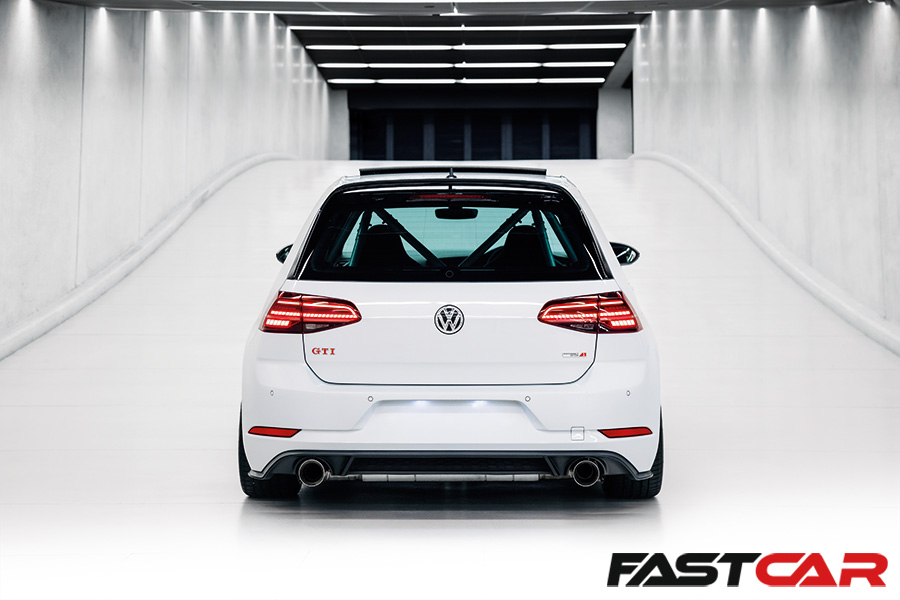
Aero adjustments
Of course, social media and a Performance VW subscription puts a world of influences within easy reach, and it didn’t take long for Stuart to start spotting gaps in the Golf’s already eye-catching presence. Clubsport Golfs were the first to get engineering and styling cues that would continue into the Mk7.5, but even TCRs missed out on the distinctive rear wing that had helped set records at the ‘Ring. Having fallen for Alex Lambert’s Clubsport Edition 40 and James Green’s Clubsport S (@gti__james), the best the Mk7.5 ever got was rapidly outstaying its welcome.
“The wing was a bit of a drunken purchase,” laughs Stuart. “I had it in my cart for a week or two, Thomas at OEM VW Shop in Germany told me he could do it at this price, and the shipping wouldn’t be too much. Then I was having a few whiskies at home, and I thought, you know what, let’s get it done. I didn’t want anything else back there, and because New Zealand never got them, this was my opportunity to build a Clubsport-inspired Mk7.5. The wing is one of my favorite mods, it changes the side profile like crazy.”
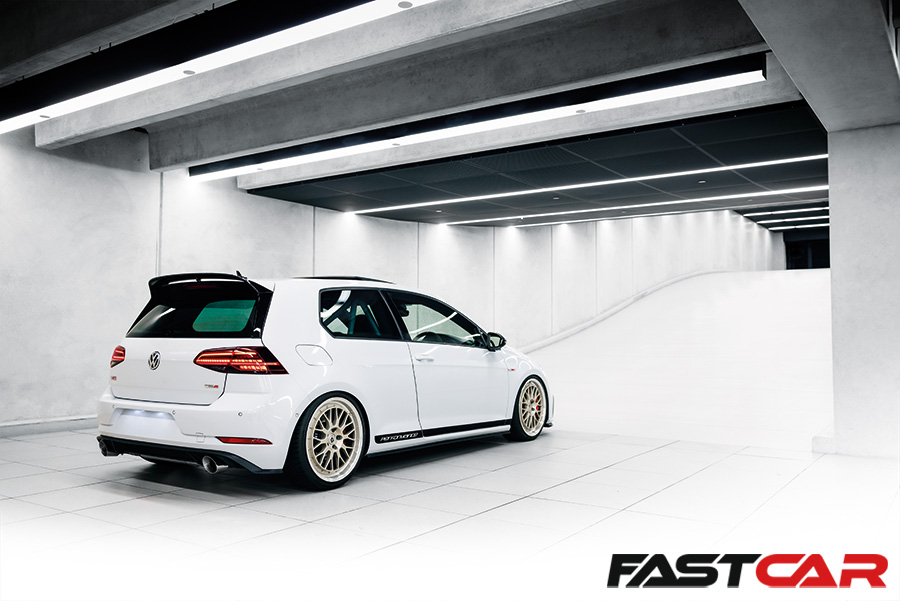
Fitting the Golf Clubsport rear wing
This wasn’t a small job; the Clubsport wing doesn’t fit GTI tailgates, so Stuart had to replace the entire panel and that change wasn’t undertaken lightly. It’s finished with the same water-based paint used at the factory, has a brand-new rear screen with the correct part number and glues, and it’s finished with a full set of replacement Performance Edition One badges. If you didn’t know any better, you could almost believe it was part of the Australian market’s unique standard spec.
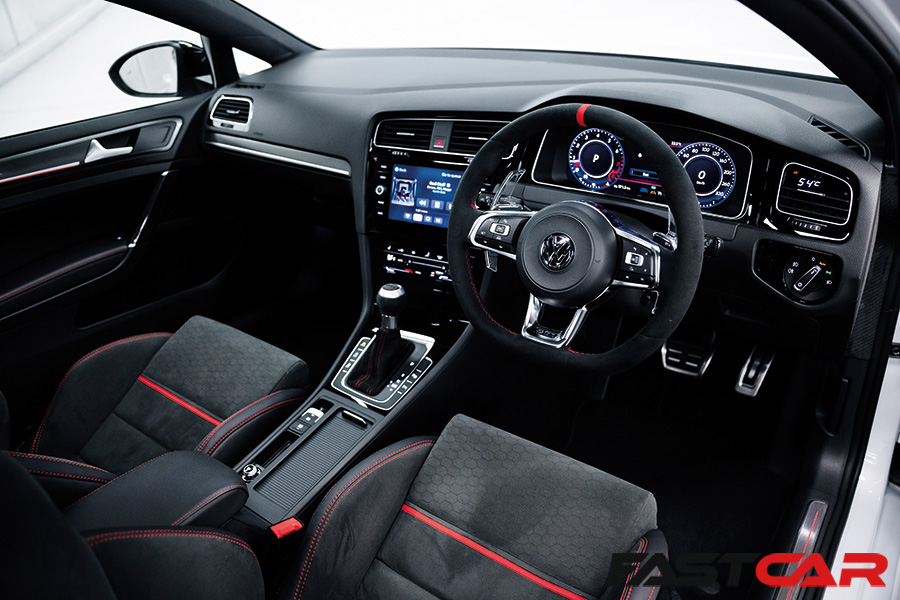
Interior changes on the modified VW Golf GTI Mk7.5
However, that workload pales in comparison to the re-worked cabin. The Golf takes some of its weight-saving cues from the Clubsport S, shedding the rear bench in favor of a body-coloured Wiechers Sport roll cage and Stern Performance net, strut brace and carpet – it’s now certified as a two-seater. Leftover Recaro Sportster CS seats from his old Mk5 could easily have substituted the Clubsport’s wingbacks, but Stuart clearly enjoys a challenge.
“I realized you can’t get proper rails that cover the missing carpet blocks, and there’s no side trim because it’s an aftermarket seat, so I bought a set of Mk5 R32 Recaro wingbacks instead,” he explains. “They’re pretty common here, because we get a lot of Japanese imports, so they’re less expensive than they are in the UK. I bought the worst ones I could find but I knew I wasn’t going to use them while they still had ‘R32’ on them and the bolsters were knackered.”
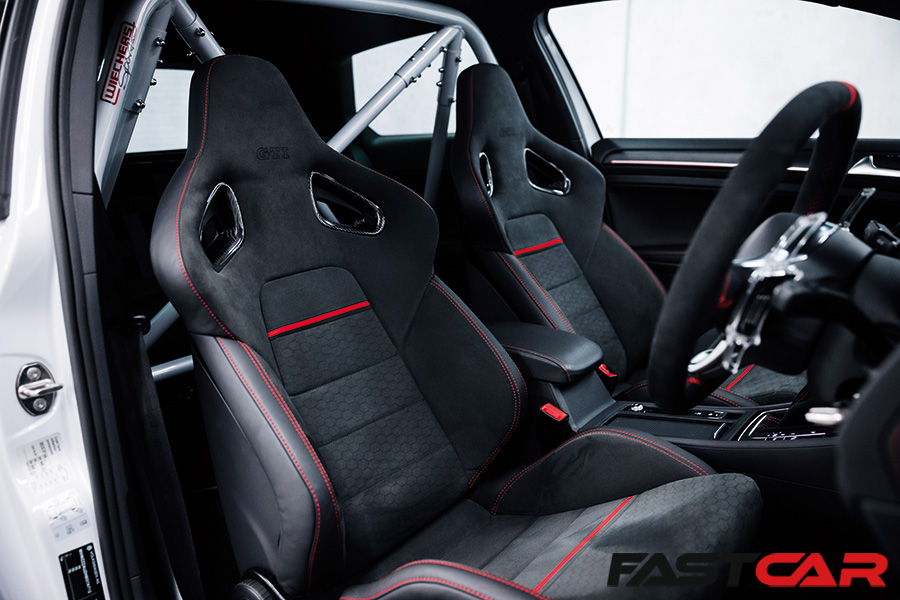
Finer details
It took almost a year to bring them up to his high standards. The covers were painstakingly stitched together by AMX-Performance in Poland using the Performance Edition One’s distinctive honeycomb-pattern art velour while Stuart rebuilt the rest of the seat. Both have new foam, with black trim pieces and carbon fiber height adjustment to tie in with the GTI’s dark interior, while the piano black backplates are glossy enough to reflect the cage.
No corners were cut here: “Modern cars have a passenger occupancy sensor in the front seat, so it knows when to deploy the airbag. A lot of people will take a Mk5 or Mk6 wingback and put airbag cancellers in and they’ll just drive around with an airbag fault, but I didn’t want to do that. I wanted it to be OEM through and through, so I ordered a whole new sensor and fitted it under the foam, so it’s just like it was when it left the factory.”
However, it’s by no means a Clubsport replica. The alcantara-trimmed steering wheel is matched with a GTI-branded Audi RS3-style knob, while the LEYO paddle shifter extensions are easier to reach and transparent to avoid obstructing the dials. Stuart even went as far as replacing the analogue air conditioning controls with the sliders from an Arteon, then reprogrammed the digital instruments to add traffic sign recognition and the Golf R’s slicker graphics and 320km/h speedometer. Naturally, it’s all been switched from R blue to the GTI’s signature red.
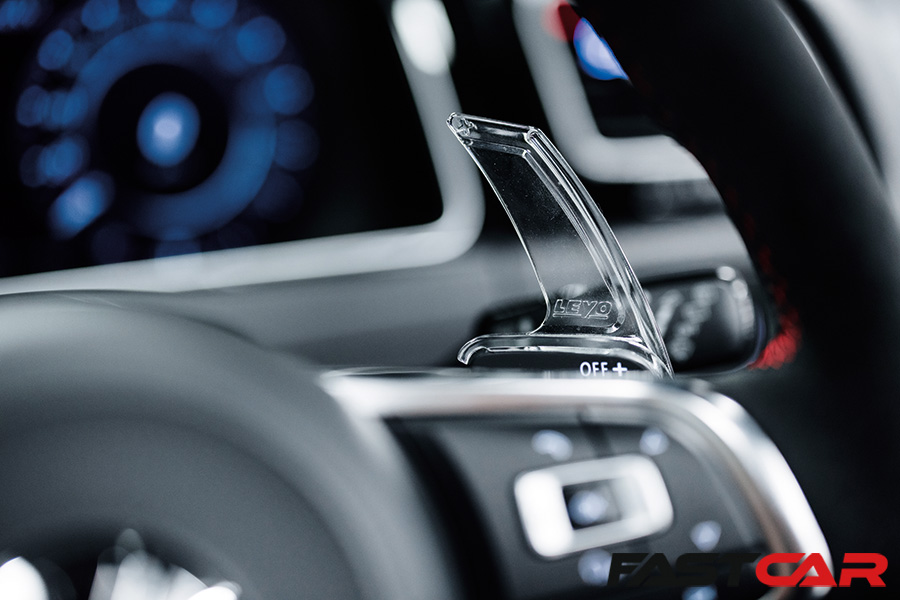
Brake upgrades
That form has function. Already impressed with the Gepfeffert coilovers, Stuart upgraded to the Clubsport S’s aluminum subframe and added a 034Motorsport locking collar kit to dial out the Mk7’s all-too-common creaks. The factory 340mm brake rotors have made way for the largest setup that would fit behind the wheels; RS3-spec Akebono six-pot calipers and 375mm discs. Race-ready Liqui-Moly brake fluid and wishbone-mounted ducts from an RS3 – compatible with all MQB-platform cars – help avoid fade when the Golf is working hard.
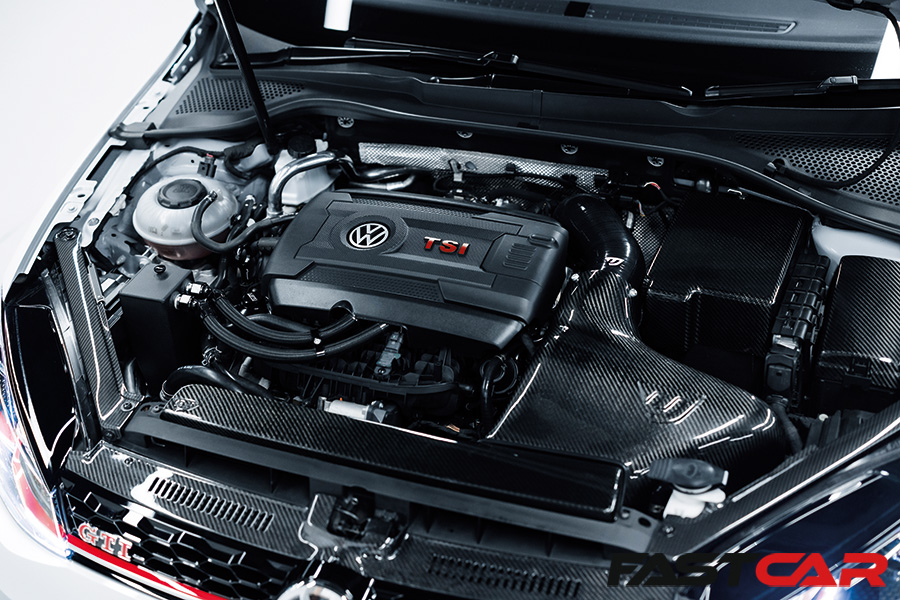
Engine upgrades on the modified VW Golf GTI Mk7.5
Up front, the GTI runs Integrated Engineering engine and transmission software with the larger IS38 turbo from a Golf R, with a Unitronic intake and Scorpion and Mountune52 exhaust system to allow for the extra airflow. Built with track use in mind, it’s also equipped with the Racing Line catch can and oil management system – a TCR Series inspired kit that reduces the chance of surges and starvation issues on track. It’s a reliable route to over 400bhp, and in a platform that has no issues putting that power down.
“These Golfs are absolutely phenomenal. If you’ve got 400hp, some good tires and good brakes, they’re so, so good. I’m a pretty committed driver, and the Golf flies – she’s pretty light and the limited-slip differential is amazing. I’ve done a few roll races, one against a Nissan GT-R and I out-braked him then dragged him up the one straight, he couldn’t keep up. Then I’ve also raced a few AMGs and there’s not much in it, and a Stage 2 RS3 which had zero chance. He sold his car because he lost to me, which I thought was quite comical,” Stuart recalls, clearly hooked on the driving experience he’d aspired to from the start.
“New Zealand is quite a performance-based country. Everything must be the fastest in the world, but at the end of the day it doesn’t matter. In South Africa there’s a saying, that there’s always a Golf faster than yours. It’s so true. I don’t care if there’s a big turbo Mk5 that’s quicker than mine, because I fucking love it.”

What’s next for Stuart?
The only drawback, having reached the peak of GTI ownership, is the high bar it sets for whatever comes next. With no three-door Mk8 to aspire to and New Zealand missing out on the Clubsport Edition 45, Stuart has set his sights on a BMW M3 if he decides to part ways with the Golf. But old habits die hard.
“I believe the Mk7.5 is the last cool Golf; semi-analogue, semi digital, looks nice, performs well and it comes with three doors,” he shrugs. “If there’s an opportunity to buy a MK2, then maybe I’ll go backwards with the Volkswagen brand if I can’t go forwards. My interpretation of a clean Mk2, with a 16-valve or R32 swap on ITBs. But the bar for those has been set ridiculously high over the years.”
Whatever comes next, it speaks volumes that a bloodline with such humble beginnings has evolved into a machine that can rub shoulders with motorsport thoroughbreds. Born out of engineering curiosity, the GTI was the seed for decades of enthusiasts exploring the potential beyond the factory spec. With the right research and a meticulous approach to detail, there’s still room for the latest models to break new ground.
With thanks to Performance VW. Words: Alex Grant. Photos: Logan West.

